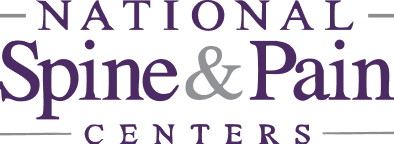Enduring a trauma and then having to relive it through nightmares, flashbacks, and anxiety attacks is a terrifying experience. Post-traumatic stress disorder (PTSD) is a condition that affects an average of 8 million Americans. It is commonly thought to result from combat situations. Yet, there are many causes for PTSD in civilians, ranging from losing a loved one to witnessing someone getting hurt.
Getting effective treatment helps PTSD sufferers to regain their health, maintain relationships, function at work, and avoid depression. In the past, treatment centered around working with a therapist and taking antidepressants. Although both these treatments can help, not all people improve.
If you or a loved one suffers from PTSD, you will be pleasantly surprised to learn of a new treatment: the stellate ganglion block. This treatment, offered by a pain specialist, goes to the source of the problem. It numbs the nerves that cause the physical symptoms of PTSD, and it improves anxiety, hyper-arousal, and sleep difficulties.
What is Post Traumatic Stress Disorder (PTSD)?
PTSD is a condition that a person may develop after experiencing or witnessing a traumatic event. A physical trauma does not have to occur for a person to have PTSD. A person can experience PTSD after a perceived threat such as witnessing someone else getting hurt. The PTSD sufferer relives the event emotionally and experiences physical changes such as an increased heart rate, excessive sweating, and tremors.
It is normal to feel hopeless and distraught for several weeks after a traumatic event. However, if these symptoms start to interfere with your social life, work and relationships, they are likely a sign of PTSD. PTSD Symptoms usually unfold within three months of the traumatic event. However, a victim may suppress traumatic memories until they emerge, years later.
Symptoms of PTSD
Symptoms of PTSD generally begin within the first 3 months after the traumatic event. They include:
Intrusive memories
- Repeated memories of the traumatic event
- A sense of reliving the traumatic event (a “flashback”)
- Nightmares
Avoidance
- A desire to avoid talking about the trauma
- Avoiding places, activities, or people that are reminders of the trauma
Negative thinking and mood changes
- Negative thoughts about oneself and other people
- Hopelessness about the future
- Memory problems, including blocking out the traumatic event (amnesia)
- Difficulty maintaining relationships with family and friends
Arousal symptoms
- Trouble sleeping
- Self-destructive behavior, such as drinking, dangerous driving
- Irritability, aggressive behavior
Physical Changes
- The “flight or fight” response
Physical signs of the “flight or fight” response
Traumatic events trigger an automatic “flight or fight” response. This basic survival tactic allows a person to either run from danger or to fight off the threat. It likely helped our caveman ancestors run from encounters with an angry saber tooth tiger and empowered them to fight off enemy tribes.
The “flight or fight” response involves a release of stress hormones into the blood (an adrenaline surge) and the activation of the sympathetic nervous system (SNB).
The SNB is a network of nerves that processes and sends messages from the brain to the rest of the body. It oversees body functions that normally take place without you ever having to think about them: heart rate, breathing, etc. Much like a plane’s autopilot takes over during emergencies, the SNB coordinates the “flight or fight” response in stressful situations.
Physical changes during “flight or fight”:
- Rapid heartbeat and increased breathing. This increases blood flow and oxygen supply to the muscles, allowing a rapid response to the danger.
- Pale or flushed skin. Under stress, your body redirects its resources (blood flow and oxygen) from the skin to areas that are essential for physical action. Blood flows to the brain, leg and arm muscles, allowing you to run, fight, and survive. As a result, your skin becomes pale in some places or flushed as the blood rushes to your brain.
- Enlarged pupils. During times of danger, the pupils dilate, allowing more light into the eyes and improving visibility of the surroundings.
- Trembling. In the face of danger, your muscles become tense and ready for action. When they become exhausted, you may experience tremors.
Click here, for more information.
Repeated “flight or fight” responses in PTSD
Although the “flight or fight” response is essential to surviving dangerous situations, there are some downsides to it. This response is automatic and cannot simply be shut off once it starts. Even though your rational mind tells you to relax after the threat is gone, it takes 20-60 minutes for the body to return to pre-arousal levels.
In people with PTSD, the “fight-or-flight” response is not always accurate. It occurs repeatedly for months or years on end, even after the threatening situation is long gone. A reminder of the trauma such as a picture, a smell, or a sound can trigger an adrenaline surge and hyperarousal.
Hope for people with PTSD – Treatments
Traditionally, the mainstay treatments for PTSD were counseling and medications. A newer treatment, the stellate ganglion block (SGB), is showing promising results in decreasing PTSD symptoms.
Counseling
Psychologists can help PTSD patients deal with their natural reactions to stress through cognitive behavioral therapy. This therapy presents patients with reminders of the traumatic event. It is conducted in a safe environment, such as a therapist’s office. This therapy (and others) decreases avoidance behavior and returns a sense of self-control to the patient.
Medications
Antidepressants such as fluoxetine (Prozac), paroxetine (Paxil), and venlafaxine (Effexor) can decrease depression, anxiety, and unwanted thoughts in people with PTSD. They work by increasing serotonin and/or norepinephrine, important messenger chemicals found in the brain. An advantage of antidepressants is their convenience. They are readily available to military personnel in the midst of overseas deployment and active combat. Disadvantages include the side effects (strange dreams, low sex drive, drowsiness) and a perceived stigma that prevents some military personnel from taking medications.
The stellate ganglion block (SGB)
Over the last ten years, the SGB (or stellate ganglion injection) has become an increasingly popular treatment for PTSD. Although it has been used to treat upper body pain disorders since the early 1900s, its use in PTSD is relatively new. A stellate ganglion block (SGB) delivers local anesthetic (numbing medication) to a group of nerves in the front of your neck called the stellate ganglion. Stellate ganglion nerves are part of the sympathetic nervous system, an important nerve network that controls body functions in stressful situations. With PTSD, the sympathetic system becomes overactive, resulting in increased heart rate, excessive sweating, irritability, and sleep disturbances. A SGB quiets the overactive sympathetic nervous system and resets it to its normal resting state. This decreases PTSD symptoms for months at a time.
Click here, for a detailed video on the SGB.
What to expect from a SGB
- A pain specialist can perform a SGB quickly and safely, under X-ray or ultrasound guidance, on an outpatient basis.
- The procedure takes less than 5 minutes to perform and is followed by a short recovery period before you go home.
- A SGB can be repeated if you have good results. A set of three injections is common, although the timing and number of injections can vary depending on the patient.
- Immediately following the procedure, you may experience a temporary droopy eyelid, a stuffy nose, and/or warmth in the arm. This resolves in several hours.
- Some people feel immediate relief after the injection; others experience a slower onset of relief within a few days.
- PTSD patients often feel a sense of peacefulness right after the procedure and have a significant reduction of intrusive thoughts, anxiety, and sleep disturbances for the weeks to come.
- A study of 166 active duty service members with PTSD, found that over 70% of patients treated with a SGB improved significantly. The improvements lasted for at least 3-6 months after the treatment.
- SGB also treats a number of pain conditions in the upper body. These include CRPS, pain after a shingles outbreak, pain after an arm amputation, vascular pain due to Raynaud’s syndrome.
People who can benefit from a SGB
According to the National Vietnam Veterans Readjustment Study (NVVRS), the lifetime prevalence of PTSD among these Veterans was 30.9% for men and 26.9% for women. While combat situations are a lead cause for PTSD, many people tend to ignore civilian PTSD.
Civilian PTSD results from non-combat-related traumas and is often associated with the September 11th attacks and Hurricane Katrina. However, there are many other causes of civilian PTSD that can improve with treatment.
Combat-related and other common traumas that cause PTSD:
- War, combat situations
- Physical assault, rape
- Witnessing a trauma directed at other people (beatings or attacks)
Causes for civilian PTSD:
- Life-threatening car accidents
- Natural disasters (trauma is experienced by victims and emergency workers alike)
- Exposure to long-term abuse (prison)
- Torture over political issues (journalists, students)
- Child abuse
- Kidnappings
- Mass shootings
- Sudden death of a loved one (child, spouse)
- Learning about a terminal illness (cancer)
- Miscarriage





.2411270924490.jpg)
.1).2410020739479.png)